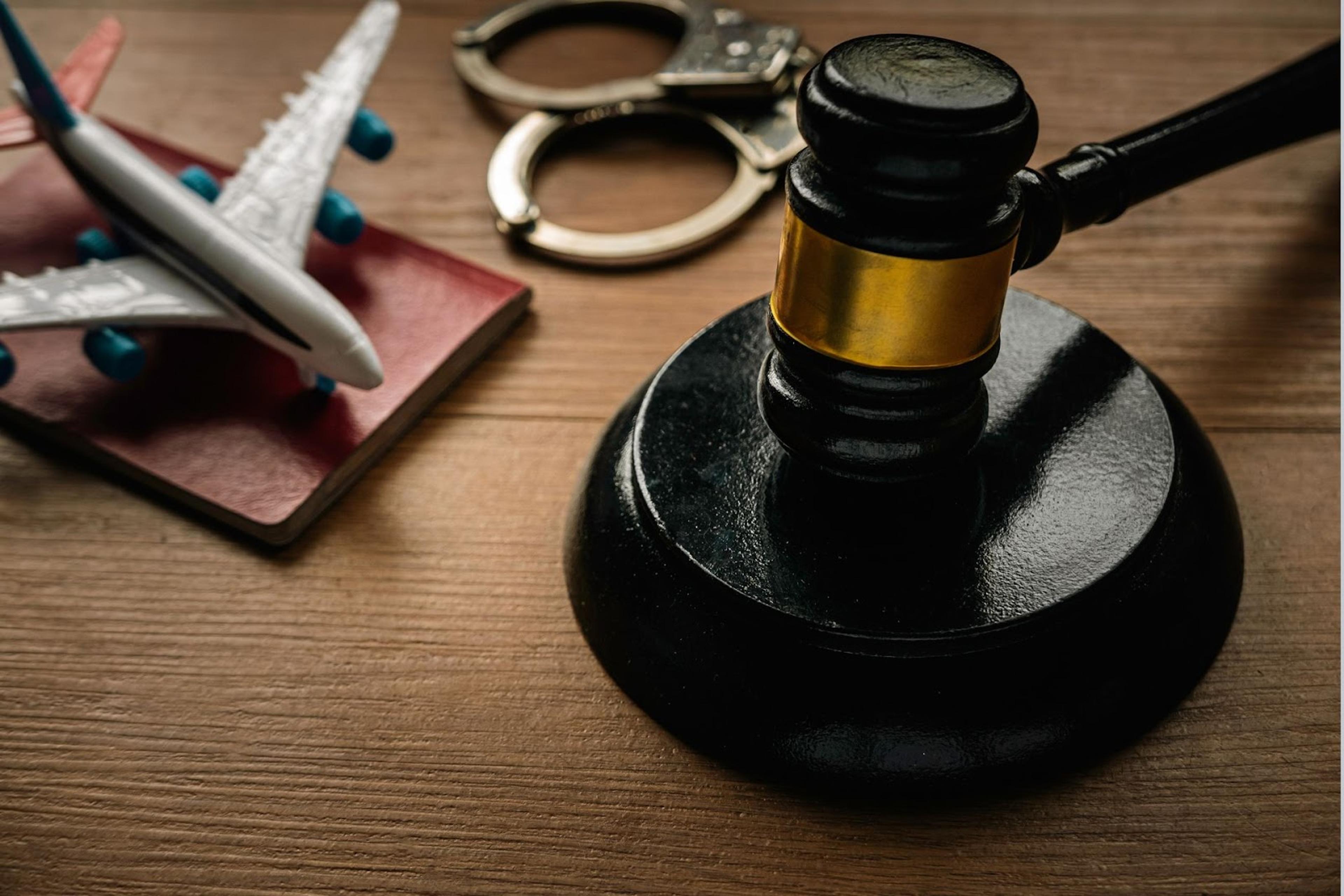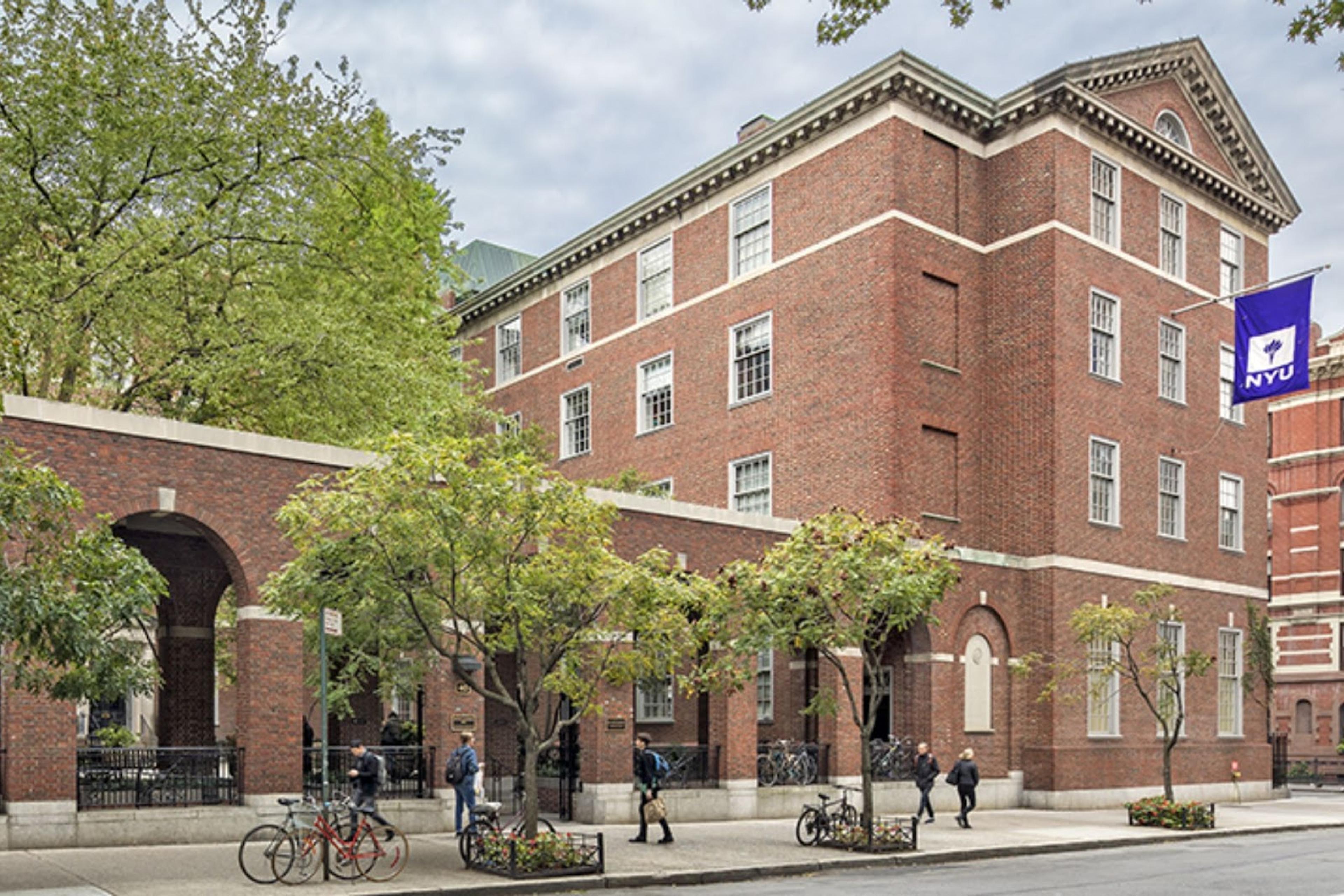LSAC Credential Assembly Service (CAS): What it Is and How It Works for Law School Applications
Learn how to navigate the LSAC CAS Report with this comprehensive guide that covers every part of the law school application, including transcripts, GPA calculation, letters of recommendation, and more.
Posted June 20, 2025

Table of Contents
Free Event

Featuring Indrani S.
How To Write Outstanding Law School Application Essays
Starting Tuesday, September 2
11:30 PM UTC · 60 minutes

Featuring Indrani S.
The Credential Assembly Service (CAS) by LSAC centralizes law school application materials, allowing applicants to send one comprehensive report to multiple law schools. This report includes transcripts, LSAT scores, letters of recommendation, and an academic summary, streamlining the process for applicants and admissions teams. Almost all ABA-accredited law schools require CAS for admissions.
Learn how to navigate the LSAC CAS Report with this comprehensive guide that covers every part of the law school application, including transcripts, GPA calculation, letters of recommendation, and more.
What is the Credential Assembly Service (CAS) Report?
Whether you’ve already decided to apply to law school or are considering it as a potential career route, you’ll want to have a basic understanding of the CAS report and what it requires. “CAS” stands for Credential Assembly Service. It’s part of the Law School Admission Council (LSAC) and is designed to make the application process more straightforward.
It works similarly to the Common App for college applications–instead of submitting your transcripts, resumes, etc. to every school, you only submit it once to LSAC and they then send a full report to your designated schools. Applications for all ABA-approved law schools are available electronically through a CAS account.
CAS Report Requirements
At a high level, the CAS report that is sent to schools on behalf of applicants includes the following:
- Academic Summary
- LSAT Score Report and Writing Samples
- Copies of Transcripts
- Letters of Recommendation
- Admission Index (If Requested)
- Other Relevant Information
Different programs will have additional requirements that may need to be submitted directly to the school. This often includes personal statements, character and fitness questions, cumulative GPA, resumes, etc. The CAS report is used as a centralized supplement to these other materials.
LSAC Registration
To get started on your CAS reports, you first need to create a secure account with LSAC. You can do that here. You’ll need to make a user ID and password, set up security questions, and add your date of birth.
LSAT/GRE Test Scores
Before you’re able to submit CAS, you’ll need to have a reportable LSAT score in your file, given that the schools you’re applying to require the LSAT. Most programs nowadays provide the option to take the GRE, though many applicants still prefer to take the LSAT.
If you have the choice, the test you take will depend on your skills and areas of strength. We recommend taking at least one practice test of each to see what your cold score is before deciding which to study for. Read LSAT vs. GRE for Law School–Which to Take and How to Ace Both for more information.
Here are some of the top 50 law schools that accept the GRE in addition to the LSAT. See all of the programs that offer this option here.
- Boston College Law School
- Boston University School of Law
- Brigham Young University Clark Law School
- Columbia Law School
- Cornell Law School
- Duke University School of Law
- Florida State University College of Law
- Fordham University School of Law
- George Washington University Law School
- Georgetown University Law Center
- Harvard Law School
- Indiana University (Bloomington) Maurer School of Law
- New York University School of Law
- Northwestern University Pritzker School of Law
- Pepperdine University Caruso School of Law
- Stanford Law
- All University of California Schools
- University of Chicago
- University of Florida Levin College of Law
- University of Georgia School of Law
- University of Notre Dame Law School
- University of Pennsylvania Carey School of Law
- University of Southern California Gould School of Law
- University of Texas–Austin School of Law
- University of Virginia School of Law
- Yale Law School
If you choose to take the GRE, you can enter the scores manually or by uploading a file. You’ll do both in the “Standardized Tests” section of the CAS report.
Note that if you are taking the LSAT for the first time, you must complete the LSAT Argumentative Writing, and have it approved, before your score can be released. The LSAT Argumentative Writing is available in test-takers’ accounts eight days before the test administration. Because processing of the LSAT writing sample can take up to three weeks, LSAC recommends completing it as soon as it becomes available.
Expert Tip: Make sure to check the class profile of your target law schools to see the average/median LSAT score of the most recently admitted class. This will give you the best idea of the score you need to hit to be competitive.
Transcripts for Law Schools
Once you’ve created your LSAC account and registered for CAS, you’ll need to send your transcripts directly to LSAC from every undergraduate and graduate school you’ve attended in the US, Canada, or US territories.
This includes community colleges, professional schools, institutions where a degree was never received, summer/evening courses, high schools if you took college-level courses, and some international programs.
You can request transcripts from schools by completing the following:
- Log in to your LSAC account
- Select “Credentials & CAS” at the top of the page
- Under “Actions and Information,” click on “Add Institutions”
- Enter the required information for all the institutions you attended
- At the bottom of the page, click “Continue” then “Confirm” once you’ve reviewed the information for accuracy
- Once the institutions are complete, you’ll be able to see a Transcript Request Form on the Transcripts page of your account
Most, but not all, schools use LSAC to securely submit transcripts through Electronic Transfer. If your target schools do not participate in it, you’ll be required to either request that your school mails an official transcript to LSAC or, if available, upload it to LSAC via the registrar portal.
To see more about transcript qualifications and sending your records, head to the official LSAC site.
LSAC Letters of Recommendation
When you register for CAS, you also get access to LSAC’s Letter of Recommendation (LOR) service. LSAC takes charge of sending your reference letters to every one of the schools you’re applying to, meaning your recommenders only need to upload them once. If you have certain recommenders for certain schools, you can control which letters go to which programs in your LSAC dashboard.
To get started, log in to your LSAC account and select “Manage Letter of Recommendation” at the top of the page. In the “My Recommenders” section, you’ll be able to add your references’ names and contact information.
The “My LOR Assignments” section is for managing which letters go to which schools. To officially send the letter requests to your recommenders, you’ll select “Submit Request” after you’ve filled out their info.
Your recommenders will then be sent an email that requests the letter and provides instructions for submission. However, they are also able to send them in on paper. If the latter, the applicant must print the LOR form and then hand-deliver it to the recommender. They will send in this form with their recommendation and it will be included in the final law school report.
When considering potential recommenders, make sure to take into account your target schools’ individual requirements and recommendations. For example, the University of Chicago states that it requires two letters but will accept up to four. The admissions team will start reviewing the application once two have been submitted unless the applicant tells them to wait until more are received.
Most schools accept the CAS LOR service but not all require it. UChicago does require that potential JD candidates use the CAS LOR service. While it doesn’t have specific requirements for who the recommenders are, it does highly recommend that one comes from an academic reference like a professor, teacher’s assistant, advisor, etc. These are just a few of the things to pay attention to when reviewing specific programs’ application requirements.

Harvard Law School — Resume Template & Example
Download this free HLS resume template and example to help you prepare the strongest application possible
How Much Do Law School Applications Cost?
There are a few different fees required to submit your applications. You’ll need to pay a subscription fee to LSAC, an additional CAS fee for every school you’re applying to, as well as a separate fee directly to the school. The LSAC charges include a summarization of your transcripts, the creation of your CAS report, processing for the letters of recommendation, and general application processing.
CAS Fee Waiver
In recent years, LSAC has adjusted its application fee waivers in an attempt to make law school applications more accessible to a greater number of applicants from every socioeconomic background.
The waiver system is two-tiered in order to recognize different levels of financial need. Depending on eligibility, this waiver can cover the subscription fee as well as up to six CAS reports.
Eligible applicants can apply for fee waivers through their LSAC account. In the “Credentials & CAS” section, select “Apply for a Fee Waiver” at the top of the page, and then choose either the US or Canada waiver application. Don’t start the application until you have all the required supporting documents. Once it’s been completed, the LSAC application will be placed on pause until the waiver is either approved or denied.
Eligibility
In order to be eligible for a waiver, you must meet one of the following requirements. Note that you will need to provide tax forms and other supporting documents, as requested by LSAC.
Also, you must not have received an LSAC finding of misconduct or irregularity.
- Be a US/Canadian citizen.
- Be a US national or permanent resident of Canada.
- Be a resident of the Republic of the Marshall Islands, the Federated States of Micronesia, or the Republic of Palau.
- Be a permanent resident alien of the US (with an Alien Registration Receipt Card).
- Hold temporary protected status in the US.
- Granted deferred action under DACA, or have you applied for deferred action under DACA.
- Be seeking asylum in the US (through the affirmative asylum process) and have filed Form I-589.
- Be a Protected Person/Convention Refugee in Canada.
Benefit Levels
The level of aid an applicant is eligible for will depend on how much they make and whether they’re independent or dependent on other earnings. Below, we’ve outlined what is covered in each tier. Applicants eligible for Tier 1 are independent, earning up to 250% of the federal poverty guidelines or dependent and earning up to 150% (300% or less when combined with parents’ income).
Applicants eligible for Tier 2 are independent and earning 250-300% of the federal poverty guidelines or dependent and under 200% (when combined with parents’ income, should be between 300-350%). LSAC may also consider other criteria like maximum asset and cash balance levels.
Tier 1:
- 2 LSATs + 2 score previews
- 1 CAS registration
- 6 CAS reports
- 1-Year subscription to LSAC’s Official LSAT Prep Plus
Tier 2:
- 1 LSAT (including writing) + 1 score preview
- 1 CAS registration
- 3 CAS reports
- 1-Year subscription to LSAC’s Official LSAT Prep Plus
Read more about LSAC's fee waivers here.
Key Takeaways
- CAS Registration Fee: $207. This fee covers the initial CAS registration, including access to submit materials to law schools via the CAS platform.
- Per-School Report Fee: $45 for each school. Each CAS report sent to a law school incurs this additional fee, on top of the initial registration.
- Additional Law School Fees: Most law schools require a separate application fee, paid directly to each institution. These fees can vary widely, so check each school's website for specific costs.
Fee Waiver Options: LSAC offers a tiered fee waiver program based on financial need, which can cover the CAS registration and up to six CAS reports, in addition to other benefits. Eligible applicants can apply for this waiver through their LSAC account.
Submit the Best Application Possible With the Help of an Expert
Compiling and submitting your LSAC CAS report requires a ton of hard work and time, and that's not even taking into account what's required by the individual programs. In order to give yourself the best chance of success, we highly recommend working one-on-one with a Leland law school admissions coach. Here are some of our most popular and highest-rated ones:
Here are a few other resources you may find helpful as you put together your applications:
- Acceptance Rates & Class Profiles of the T14 Law Schools
- LSAT vs. GRE for Law School–Which to Take and How to Ace Both
- JD Application Deadlines of the T20 Law Schools
- How Many Law Schools Should You Apply To?
- How to Get Into a T14 Law School
- Everything You Need to Know About LSAC and the CAS Report for Law School
- How to Write a Compelling Law School Personal Statement
LSAC & Law School Applications: Frequently Asked Questions
What does LSAC stand for?
- LSAC stands for “Law School Admission Council.”
What is the LSAC?
- On its website, LSAC describes itself as, “a not-for-profit organization whose mission is to advance law and justice by encouraging diverse, talented individuals to study law and by supporting their enrollment and learning journeys from prelaw through practice.” Most pertinent to applicants, LSAC administers the LSAT and offers a Centralized Application Service (CAS) report, through which applicants send their transcripts and letters of recommendation to all their target schools.
Do LSAC accounts expire?
- No, although your CAS subscription will expire after five years.
How long does it take to process a CAS report?
- Processing times for a CAS report can vary depending on factors such as the time of year and completeness of submitted materials. Typically, once all required documents—like transcripts, LSAT scores, and letters of recommendation—are received, LSAC takes about two weeks to compile and send the CAS report to your designated law schools. During peak application times, it may take slightly longer, so it's recommended to complete your CAS setup and submit documents well ahead of deadlines.
Do all law schools require CAS?
- Nearly all ABA-accredited law schools require applicants to use the Credential Assembly Service (CAS) as part of their admissions process, making it a standard component for law school applications. However, it’s essential to confirm requirements for each school you’re applying to, as some non-ABA or international programs may have different application processes.
Can I update my CAS report after submission?
- Once your CAS report is submitted, updates are limited. You can add new LSAT scores or additional transcripts if needed, and LSAC will automatically update the report sent to schools with this new information. However, changes to previously submitted details or personal statements aren’t allowed once the report has been processed and sent. It’s best to ensure all information is accurate before completing the CAS report submission.
Can I edit my CAS report after submitting it?
- Before reports are submitted, all the information must be complete. Your CAS report will not be sent to schools until all transcripts, LSAT scores, and letters of recommendation are in the file. You can edit the information for any application with a status of “In Progress.” If your application is in the Shopping Cart but hasn’t fully been submitted, you can still edit it by first moving it to Active Applications. Past the Shopping Cart, however, you will not be able to edit it.
When do I need to register for CAS?
- You should sign up for LSAC/CAS at least four to six weeks before the deadline of your first law school application. This is important primarily because it takes at least two weeks to process transcripts.
Do you pay for a CAS report for every school you’re applying to?
- Yes. To submit CAS reports, you’ll need to pay a one-time fee of $195 and then $45 for each school you’re applying to. This is in addition to any fees that are required by the schools themselves.
How long does it take for the CAS report to get to the school?
- The amount of time that it takes CAS to process and verify each part of the application varies dramatically, though most often everything is done within three weeks. CAS does not send the applicants’ reports until the school has alerted LSAC that it’s ready for them. Once that’s done, the reports that have been completed and do not have any financial holds will be sent almost immediately.
When do law school applications open?
- Most law school applications open in early September. Early decision deadlines typically land in mid-November and regular deadlines in mid-February to early April. To see more info on deadlines, see JD Application Deadlines of the T20 Law Schools.
What do you need to get into law school?
- Base requirements include an undergraduate degree, standardized test scores, letters of recommendation, a personal statement, a resume, and application fees (unless waived). To get into a decent program, applicants will need to have a competitive GPA and LSAT/GRE score. These two components are heavily weighted in admissions decisions.
How does LSAC calculate GPAs?
- To give law schools a uniform way to view applicants’ GPAs, LSAC converts all grades to a standard 4.0 system. You can see LSAC’s conversion table here. Withdrawals, incompletes, courses taken after conferral of the first bachelor’s degree, noncredit courses, and remedial courses are excluded from the conversion. Usually, there is no variation between LSAC and the student’s GPA calculation and if there is, it is very rarely substantial.
What GPA do you need for law school?
- The GPA that gives you a chance of getting into any given program will depend on that school’s numbers. For the best idea, we recommend going to your target schools’ “Class Profile” pages and looking at the most recent class’ GPA averages. For example, Harvard Law School’s JD Class of 2025 had a median GPA of 3.92. The 25th percentile was 3.82 and the 75th was 3.99. From this, you can infer that–not taking into account all the different parts of your application–a GPA between 3.82 and 3.99 will lead to the highest likelihood of admission.
How do I delete recommenders on the LSAT CAS report?
- In your LSAC account, head to “Letter of Recommendation.” In this section, you’ll see a space titled “My Recommenders” where you’ll be able to add new recommenders and edit/delete existing recommenders.
How do I send my transcripts to LSAC?
- For most schools, you send your transcripts by logging onto your LSAC account, adding all of your institutions, confirming the information, then using the official Transcript Request Forms that will then appear in the transcripts section of your CAS report.
Which transcripts are required?
- Transcripts are required from all institutions where you earned college credits, including those where you took college-level classes while in high school, institutions where you received credits that were transferred to a degree-granting school, and where you took courses that were not part of your degree. This includes ones that might only indicate grades of “withdraw,” “incomplete,” etc.
How long does it take LSAC to process transcripts?
- Your transcripts will be processed within two weeks of the date that they are received. International transcripts may take a little longer if you attended them for more than one year.
How many letters of recommendation for law school?
- Every school sets its own specific requirements for letters of recommendation, though most ask for at least two. For example, here are the requirements of the top five law schools.
- Yale Law: At least two letters, that are highly preferred to be professors.
- Harvard Law: At least two recommendations are required but up to three are allowed. At least one is strongly recommended to come from an academic source.
- Stanford Law School: At least two are required and up to four are accepted. They recommend that all recommenders are instructors but if difficult, this can be adjusted.
- University of Chicago Law School: At least two are required, and up to four are accepted. It’s preferred that at least one comes from an academic source.
- Columbia Law School: Two letters are required, and both should be from the faculty if the student is still in school or has only recently graduated.
How long does it take LSAC to process letters of recommendation?
- Digital letters will only take a short time to process. Paper letters, on the other hand, will take two weeks from their receipt to be fully processed.











